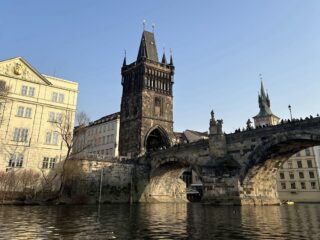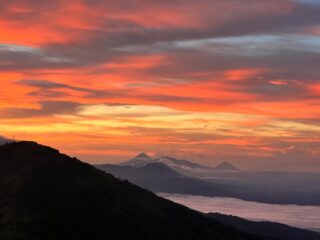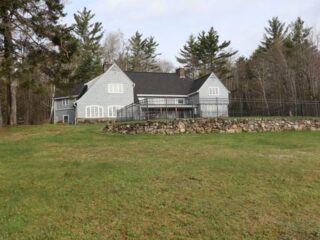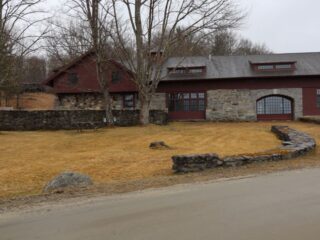By Umberto Veronesi
A few summers ago, I embarked on a road trip down the west coast of Sardinia, the Italian island known for its wonderful seaside destinations, white Caribbean-like beaches and blue-green waters. The prospect was certainly a very tempting one, all the more in light of the scorching Sardinian heat, which in those days had been intensified by a heatwave of the kind that we are getting more and more used to. As I stepped out of the airplane in Alghero, a small and picturesque town on the north-western coast, I was literally punched in the face by a wall of heat that sucked all the oxygen from my lungs and left me stunned for a few moments. “It’s been like this for the past three weeks” my B&B host told me when I reached the place, drenched in sweat, “we’re waiting for the maestrale to come in and bring some cool air”. But in spite of the brutal weather, the simple fact of being there filled me with excitement.
I have always felt irresistibly drawn to Sardinia’s deeply wild soul, to its tormented history. Continuous invasions and conquests have been made by pretty much every culture that inhabited the Mediterranean basin, from the Phoenicians to Carthage and the Romans, from the Byzantines through to the Spanish and the Italians (Sardinians do not consider themselves Italians). Unsurprisingly, Sardinians have grown to fear the sea, for all it ever brought was trouble, and instead have historically preferred to inhabit the harsh, barren and mountainous inland regions, where invaders would not venture and where they lived undisturbed. It also comes as no surprise that the comings and goings of many different peoples have created a cultural melting pot, resonating in the Sardinian language, which incorporates echoes of Latin, Greek and Arabic, and is linguistically closer to modern-day Catalan than it is to Italian.
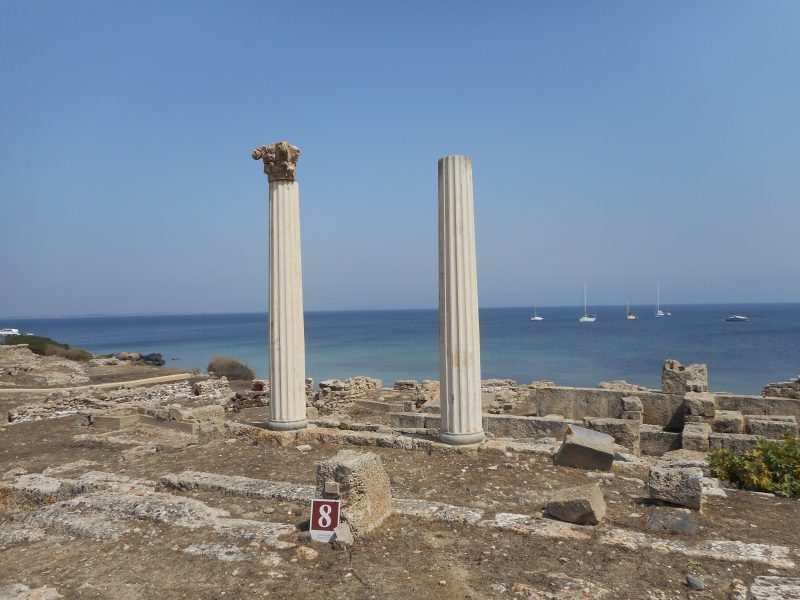
In the travel memoir Sea and Sardinia, the English writer and poet D.H. Lawrence left us some beautiful pages about this land, which he crossed, south-to-north, in 1921 with his wife Frieda. I had the book with me, an old Italian edition that a Sardinian friend had once given me as a goodbye present. One can feel how Lawrence–well-travelled and used to the oddities of foreign countries–could not quite come to terms with Sardinia and its people.
The room – in fact the whole of Sardinia – was stone cold, stone, stone cold. Outside the earth was freezing. Inside there was no thought of any sort of warmth: dungeon stone floors, dungeon stone walls and a dead, corpse-like atmosphere, too heavy and icy to move. The lamp went quite out, and the q-b gave a cry. The brown woman poked her head through a hole in the wall. Beyond her we saw the flames of the cooking, and two devil-figures stirring the pots.
Lawrence was as fascinated as he was repelled, alternating lines of reverence-like respect with frustrated and often nasty comments on the bewildering “otherness” of a place that had chosen to avoid many aspects of modernity.
Oh wonderful Orosei with your almonds and your reedy river, throbbing, throbbing with light and the sea’s nearness, and all so lost, in a world long gone by, lingering as legends linger on. It is hard to believe that it is real. It seems so long since life left it and memory transfigured it into pure glamour, lost away like a lost pearl on the east Sardinian coast. Yet there it is, with a few grumpy inhabitants who won’t even give you a crust of bread. And probably there is malaria – almost sure. And it would be hell to have to live there for a month. Yet for a moment, that January morning, how wonderful, oh, the timeless glamour of those Middle Ages when men were lordly and violent and shadowed with death.
I was especially fascinated by Sardinia’s rich mining history, so I drove to a once flourishing mining district located on the south-west coast. For a period, the stimulus of extractive metallurgy and the sheer number of Sardinians working as miners had sent a land so deeply anchored to its past straight to the forefront of the labor movements of the early 20th century. Meanwhile, the harbour of Porto Flavia, literally hanging from a cliff overlooking the bluest sea, was a science fiction-like engineering wonder of the 1920s. After the 20s–like everywhere else in post-war Europe–mining activities declined dramatically, leaving behind a trail of ghost towns and rusty ruins.
And here we come to the most remarkable discovery of my Sardinian trip: the town of Montevecchio, perched on top of a hill heavy with lead and zinc ores. For decades, Montevecchio had been an important mining center, until it too had gradually been abandoned. In more recent years the area has found new life as a major site of mining tourism and industrial archaeology, attracting curious holidaymakers who feel like taking a break from the dreamy sandy dunes by the sea, only a few miles downhill. The town itself is little more than a bunch of roads under a canopy of pines, with a few houses scattered around. I parked my rental car in the shade and made my way to the ticket office, the dramatic screech of cicadas the only sound to be heard. I booked a tour of the mining site and sat on a bench outside waiting to be called. The maestrale was still nowhere in sight and the heat was extreme, but my Italian genes had somehow been awoken and I had slightly adjusted to it by then. Some twenty minutes later, a guide walked me and the rest of the group to a vast outdoor area, a sort of valley flanked by bushy hills and dotted with ruined structures, hollow skeletons made of concrete, broken glass and corrugated metal, their actual size dwarfed by the huge empty sky above. Scattered all over were pieces of machinery of various sorts and the monumental entrances to the shafts. A rusty railway track cut through the open space like a red scar and got lost in the distance. Everything was silent and dead still; all I could hear was the gravel crunching under my shoes.
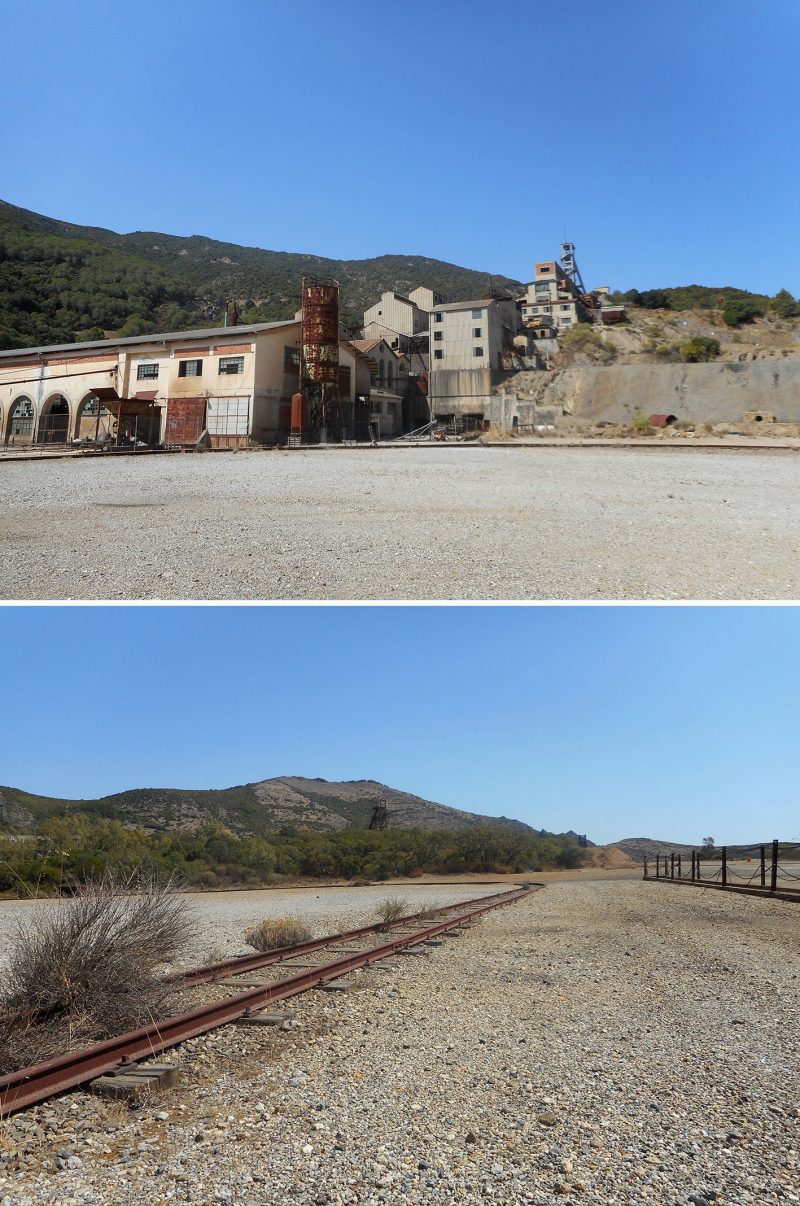
As part of the display, we were shown the miners’ homes. Entire families from towns near and far had once found accommodation here, women and children following the men who went down the shafts, every day. As part of the display, some of the houses were restored to their original interiors, with wood-framed beds and copper kitchen utensils hanging from the whitewashed walls.
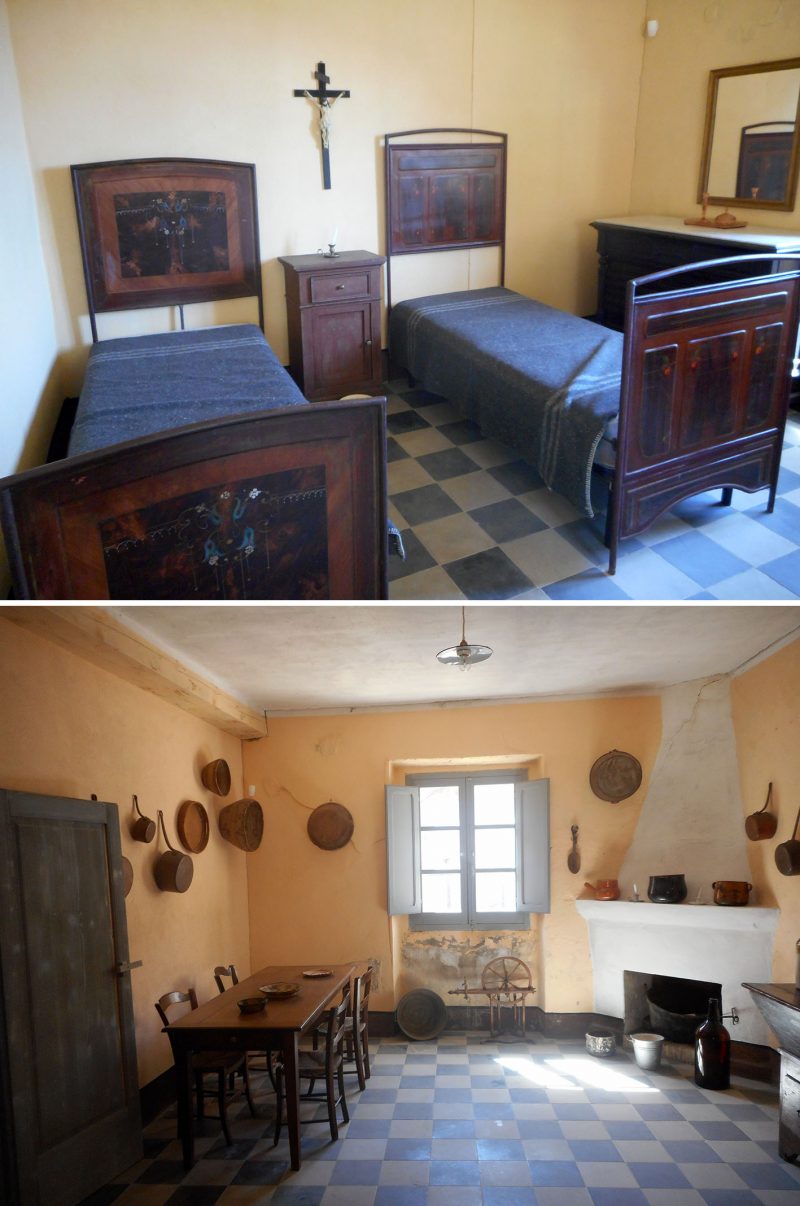
As I was standing there, among the religious images of Saint Barbara, the patron of miners, I thought about the extraordinary epic of American folk labor songs, perhaps America’s richest body of mythology. “I was born one morning when the sun didn’t shine/I picked up my shovel and I walked to the mine” goes Merle Travis, who sang this epic better than anyone else. In Dark as a Dungeon, my personal favourite, Travis sings about coal mining (incidentally, coal was dug not far from Montevecchio) and the contradiction between the misery and almost addictive character of working such an ancient job.
It’s a-many a man I have seen in my day,
who lived just to labor his whole life away.
Like a fiend with his dope and a drunkard his wine,
a man will have lust for the lure of the mines
I hope when I’m gone and the ages shall roll,
my body will blacken and turn into coal.
Then I’ll look from the door of my heavenly home,
and pity the miner a-diggin’ my bones.
Where it’s dark as a dungeon and damp as the dew
where the danger is double and the pleasures are few
where the rain never falls and the sun never shines
it’s dark as a dungeon way down in the mines
As I went through the song in my mind we came to the end of the tour. For the second time since I had set foot in Sardinia I was stunned, disoriented, but this time it was not the heat. This time it was the “uneasy sense of blood-familiarity” that had haunted Lawrence during his own trip, the feeling that this ancient land “belongs in some way to something in me – to my past, perhaps”. There are places where one feels a sense of belonging, places that seem to talk to you, and Sardinia was talking to me that day, from the empty shafts, through the gravel under my feet, and via the sea that I could see in my mind’s eye, impossibly blue, beyond the barren hills. As it happens, the long-awaited maestrale arrived a few days later, when I was in Cagliari, Sardinia’s main city on the south coast, enjoying my last night before going back home. The wind came rushing down the tangle of streets of the old town, the night suddenly grew cool and smelled of the sea, and I fell even more in love with this astonishing land, a land that somehow knew me intimately, a place where I had discovered my own wild west and found the epic of folk song.
Umberto Veronesi is an archaeologist specializing in early modern alchemy, metallurgy and glass making. He is finishing a PhD at UCL in London, the city where he currently lives and the place that has inspired and shaped him more than any other. He considers reading and writing as the main channels to express emotions and his favorite piece of travel writing is Bruce Chatwin’s collection of stories “What am I doing here”. Umberto’s preferred activity during the pandemic has been wandering the streets of east London chasing old memories and windy corners.




